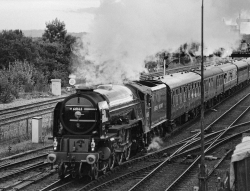You need to think of how chromogenic films work, that's modern colour films and XP1/2, the dye couplers in processed film have far less physical density than a conventional B&W film but because of the coupler colour have a greater effect than the comparable density of a silver negative. With XP1/2 the coupler(s) give a reddish brown colour and of course that's similar to a safelight.
So when you add the staining to a slightly lower density silver component with a Pyro staining developer you're effectively extending the highlight end of the films characteristic curve, this actually helps give better highlight detail, and less compression of highlight contrast.
I don't notice any increase in base fog with Pyrocat HD, my negative print for pretty much the same times and grades as when I used Rodinal and Xtol, they are easy negatives to print even in quite difficult lighting conditions.
Ian


